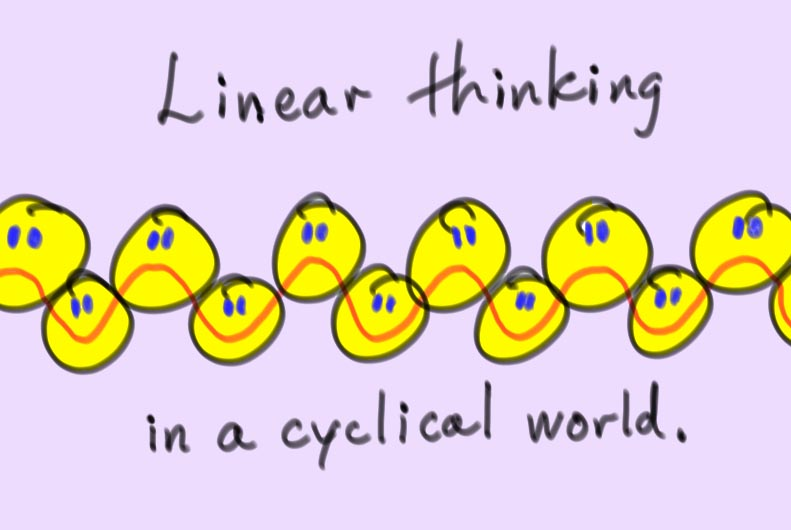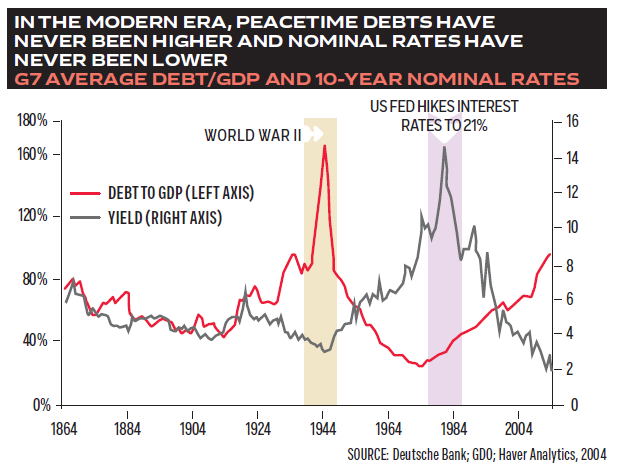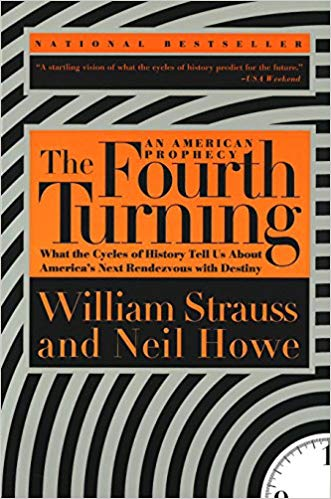Howe & Strauss describe three different approaches to thinking about time in their book, “The Fourth Turning”: chaotic, cyclical and linear. This is an incredibly valuable lens through which to view the world. Each approach has its benefits but a singular focus on one at the expense of the others can lead to dangerous outcomes. I believe we’ve entered into a world of linear thinking, mixed with a little bit of chaotic thinking and that this has got dire consequences for society.

Chaotic time looks at the moment in isolation. Eastern philosophy elevates the positive characteristics of chaotic time, placing it as a spiritual goal, encouraging people to focus on the present moment. The present moment is arguably the most valuable because it’s the only one you can truly impact. I value the way meditation generates awareness of this fact. However, with chaotic time alone, history has no path. “It can dissolve the connective tissue, questioning the linkages between cause and effect which is dangerous because clearly there is a relationship. Ignorance of these linkages can reduce moral accountability,” which isn’t the type of society we want to live in. “Just do it” is an influence of chaotic time in popular culture and it’s pretty easy to identify instances where just-doing-it is a good idea and where it’s a terrible idea. Myopic present-mindedness will also result in limited planning and progress with little direction.
“Cyclical time originated when the ancients linked natural cycles, like seasonal cycles, to human activity.” Crops are planted at certain times of the year, harvested at others and often society would coordinate around these cycles, fasting during one cycle and feasting during another. Lunar cycles and seasons are the most obvious cyclical cycles but even a human life has a cyclical nature to it. The average human is born, grows up, becomes an adult, takes on greater responsibilities, ages and dies, which also connects neatly with the natural seasonal cycles. Cyclical time is ingrained in pretty much every culture that’s ever existed. Religious holidays, in particular, are usually tied to these cycles.
“Cyclical time overcomes the chaotic nature of present-minded time through repetition and planning for the next cycle.” Preparation for winter, for having children or even just for the cold evenings. A realisation of cyclicality allows societies to compare themselves through each cycle and progress. Additionally, cycles create respect for both the past and present, knowing that we only occupy a small fragment of time in the present. Cycles are endless and yet endlessly completed which introduces a mystical nature to time and perhaps that is a reason why modernity tries to ignore them? Cyclical repetition can also produce a meaningless nature to life. At the extreme, we could think “we’re all going to die so what’s the point of doing anything now?” “Where are we going?” “What are we trying to achieve?” What’s the point?”
“Linear time sees a unique and usually progressing story with an absolute beginning and end. It took hundreds of years to catch on but had a profound impact when it did.” The rise and spread of western monotheistic religions (one god) inspired the hope that mankind is heading in a clear direction, towards the arrival of the messiah. “Post the industrial revolution and enlightenment, linear thinking progressed independently of religion and a western dogma emerged, seeing history as progress.”
On the positive side, it’s great to target progress and improvement. We want to live in societies that are more educated, wealthier, happier and safer. It’s also good to look back in time, learn from the mistakes and avoid them in the future. Linear time provides pretty good answers to the deep questions posed above by cyclical time about meaning, purpose and direction. Religion has its answers, but modern societies create their own narratives to push people into the future, “the American Dream”, “The Rainbow Nation” and the “Millennium Development Goals” are all good examples.
But… have we chosen the right goal? Do we agree on the goals? Do we have the correct metric to measure these goals? And what happens if we focus on one goal at the expense of other goals? Clearly, we cannot choose one religion for everyone but what about other goals? Let’s choose education, which is widely held and noble goal. But what type of education? Basic, high-school or college? Practical, philosophical or theoretical? How do we measure progress in education? What is its importance relative to our other goals? And how much are we willing to pay for it? By many metrics, America is more educated than it was 100 years ago but is this unmistakably a good thing?
Student debt is also at its highest levels on record, which basically implies that the education wasn’t as valuable as the students thought it would be. If it was valuable, then students would have received adequate salaries to pay off the debt… Have we pushed the concept of education to such a degree that people are making ignorant decisions by putting themselves into a lifetime of debt in order to get an education? An uneducated decision by a person who was trying to get educated – there’s an oxymoron!
Education is not a bad goal but humans are complex. Unintended consequences can arise if we mismanage macro levers and linearly focus on certain goals as a society. I think we’ve got a serious case of this in the world today. Economic growth is another great example. Politicians and economists are single-mindedly focused on economic growth as defined by Gross Domestic Product (GDP). Don’t get me wrong, I want society to grow, develop, become more productive and generate better outcomes. But does GDP encapsulate this goal? And what are the consequences of single-mindedly focusing on it? Economists at the US Treasury and Federal Reserve are so convicted by the linear conception of progress that they want to do away with economic recessions. At what cost?
Historically recessions have been a healing process for the economy, liquidating bad investments and reallocating capital towards good investments so that society can progress more productivity. Of course, we don’t want to just throw the economy into recession by doing something stupid like closing the economy to international trade. But is the avoidance of a recession so important that we want to lower interest rates to zero? The Fed thinks yes, but what are the consequences? What are the consequences on bond markets? What are the consequences of negative bond yields? What are the consequences for savers who cannot invest in cash or bonds any longer? What are the consequences on society when we’re telling people that there is no reward for saving and investing in the future?

As with anything important in life, there is no single answer to ranking the importance of chaotic, cyclical and linear time. Each has its benefit and each its weakness. The answer lies in balance. I’m convicted that major policymakers are off-balance, heavily biased towards a linear conception of time. With global debt levels close to their highest levels on record and interest rates at the opposite end of the spectrum, I think we’re reaching a point where the cycle will reassert again.
Note: I’ve “quoted and italicised” the sections of this article that come directly from my notes of Howe and Strauss’ book. The first picture is from creativityboost.net
